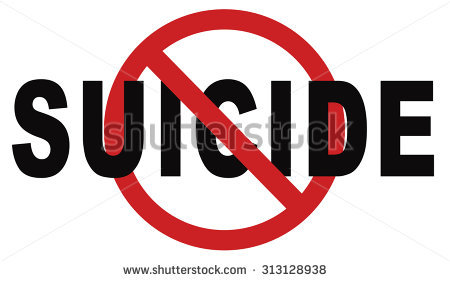When doctors and interns commit suicide
It’s a taboo topic. It’s a hush-hush topic. And because September is National Suicide Prevention Awareness Month, I think it’s a life-saving topic.
Although exact numbers are not known due to reporting and coding, around 400 doctors commit suicide every year in the U.S. www.emedicine.medscape.com/.
The results of a 2016 study which included data from 100,000 medical students, reported in the Journal of the American Medical Association, revealed that more than 27 percent experienced depressive symptoms and more than 11 percent reported having suicidal thoughts. Of the 954 students who screened positively for depression, only 15 percent sought psychiatric treatment.
According to a 2014 article in the New York Times, “Hospitals and residency programs recognize the toll residency takes on the mental stability and physical health of new doctors. In 2003, work hours were capped at 80 hours a week for all residency training programs. Residents are provided confidential counseling services to help cope with stress. www.nytimes.com/.
Pamela Wible, a family physician, gave a talk at a 2015 TEDMED conference called “Why Doctors Kill Themselves.” Dr. Wibel, the author of the 2016 book, Physician Suicide Letters—Answered, “exposes the pervasive and largely hidden medical culture of bullying, hazing, and abuse that claims the lives of countless medical students, doctors, and patients.” Dr. Wible has collected 900 accounts of doctor suicides and she set up an anonymous helpline. www.idealmedicalcare.org/.
A documentary film called “Do No Harm; Exposing the Hippocratic Hoax” by Robyn Symon previews in September 2018. “Jumping off hospital rooftops, hanging themselves in janitorial closets, overdosing on drugs—they’re A students and their suicides are often like well-planned school projects…Medical students and families of physicians touched by suicide come out of the shadows to expose this silent epidemic and the truth about a sick healthcare system that not only drives our brilliant young doctors to take their own lives but puts patients lives at risk too.” www.donoharmfilm.com/.
The American Foundation for Suicide Prevention created a video, “Struggling in Silence: Physician Depression and Suicide.” Experts discuss depression’s symptoms, neurobiology and treatment, its prevalence in the medical community, the need to cultivate a supportive environment for physicians and the ongoing struggle to de-stigmatize mental illness. Visit www.youtube.com/ or www.gpb.org/struggling-in-silence or www.afsp.org/.
Four STEPS to identify at-risk physicians and refer them to appropriate care is a resource found at the American Medical Association website. www.stepsforward.org/modules/preventing-physician-suicide.
“In every population, suicide is almost invariably the result of untreated or inadequately treated depression or other mental illness that may or may not include substance or alcohol abuse, coupled with knowledge of and access to lethal means,” according to a 2011 article in the journal Depression Research and Treatment.
September is National Suicide Prevention Awareness Month. National Suicide Prevention Week is September 9 – 15, 2018, with World Suicide Prevention Day on the 10th.
We need to keep talking about suicide prevention and intervention. It’s a matter of life and death.
Melissa Martin, Ph.D, is an author, columnist, educator, and therapist. She lives in Ohio. www.melissamartinchildrensauthor.com. Contact her at [email protected].
[livemarket market_name="KONK Life LiveMarket" limit=3 category=“” show_signup=0 show_more=0]







No Comment